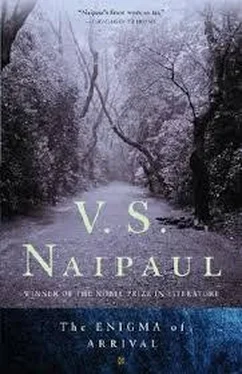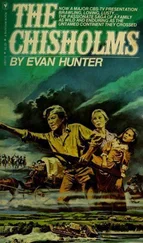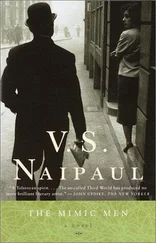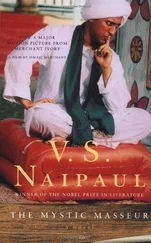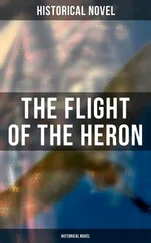V. Naipaul - The Enigma of Arrival
Здесь есть возможность читать онлайн «V. Naipaul - The Enigma of Arrival» весь текст электронной книги совершенно бесплатно (целиком полную версию без сокращений). В некоторых случаях можно слушать аудио, скачать через торрент в формате fb2 и присутствует краткое содержание. Год выпуска: 2012, Издательство: Picador, Жанр: Современная проза, на английском языке. Описание произведения, (предисловие) а так же отзывы посетителей доступны на портале библиотеки ЛибКат.
- Название:The Enigma of Arrival
- Автор:
- Издательство:Picador
- Жанр:
- Год:2012
- ISBN:нет данных
- Рейтинг книги:3 / 5. Голосов: 1
-
Избранное:Добавить в избранное
- Отзывы:
-
Ваша оценка:
- 60
- 1
- 2
- 3
- 4
- 5
The Enigma of Arrival: краткое содержание, описание и аннотация
Предлагаем к чтению аннотацию, описание, краткое содержание или предисловие (зависит от того, что написал сам автор книги «The Enigma of Arrival»). Если вы не нашли необходимую информацию о книге — напишите в комментариях, мы постараемся отыскать её.
The Enigma of Arrival — читать онлайн бесплатно полную книгу (весь текст) целиком
Ниже представлен текст книги, разбитый по страницам. Система сохранения места последней прочитанной страницы, позволяет с удобством читать онлайн бесплатно книгу «The Enigma of Arrival», без необходимости каждый раз заново искать на чём Вы остановились. Поставьте закладку, и сможете в любой момент перейти на страницу, на которой закончили чтение.
Интервал:
Закладка:
The elms had finally died in the valley. Many, before they had finally died, had been felled, cut up; others had died standing up, remaining bare, going grayer against the summer green. And the valley road became suddenly open. Curves once overhung with green, mysterious and full of depth, showed plain; tilled downs, without a border of elms and wild growth between the elms, sloped down simply to the asphalt road. House plots showed plain, and houses and their ancillary little corrugated sheds looked naked. The shallow river and its wet banks remained enchanting; but the land on either side became ordinary.
And time altered for me. At first, as in childhood, it had stretched. The first spring had contained so much that was clear and sharp — the moss rose, the single blue iris, the peonies under my window. I had waited for the year to repeat. Then memories began to be jumbled; time began to race; the years began to stack together; it began to be hard for me to date things.
Bray, the car-hire man, once the neighbor of Pitton, the gardener (whose house had been bought, for a price that had a sobering effect on Bray, by a young surveyor with a Salisbury practice), Bray began to talk to me of religion. Was that before or after the rooks came? Before or after the discovery of the young vagrant who had been camping for some time in the manor grounds?
He had been living, this man, in the children’s house in the overgrown orchard, near Pitton’s garden “refuge.” There had been wanderers in previous summers; but this man was one of the many new itinerants — not gypsies now, but young city people, some of them criminals — who moved about Wiltshire and Somerset in old cars and vans and caravans looking for festivals, communities, camping sites. The discovery of this man created alarm. It would have been easy for others to follow him, and for knowledge of the children’s house to spread. So at last, sixty or seventy years after it had been built, the children’s house, seldom used by the children for whom it had been intended, and still more or less whole, even though its thatch had slipped in one place, was closed, its door and windows nailed up and barred with timber planks. And, as a further deterrent, Mr. Phillips had the round building wound about with barbed wire.
Like the closing of the wide white gate at the end of the lawn after Pitton left, and the piling up of dead branches on the inside of the gate, to keep the gate closed, this abandoning of the children’s house was an event. But I couldn’t date it. The order that Pitton had imposed not only on the grounds but also on my idea of the seasons, that order had gone. I no longer had that order to set events against, events which now, as time raced, became jumbled — even the coming of the rooks, even the talk from Bray of religion.
A S MUCH as any comparable area of Egypt or India, the region (once a vast burial place) was full of sacred sites: the circles of wood or stone, the great burial mounds, the medieval cathedrals and abbeys, and the churches that were often no less grand. And faith hadn’t stopped there. Scattered about these monuments, cultural shrines, and side by side with them sometimes, were relics of more recent ways of worship.
In the center of Salisbury, across a narrow pedestrian lane from a well-known cake shop, there was a magnificently windowed Gothic church. On the wall of the chancel at the far end, and just below the roof, there was a primitive painting of Doomsday: the colors of the painting magenta and green, both faded: with naked medieval figures in heaven on the left, hell on the right, the quality of the painting and the knowledge of anatomy appearing to match the quality of medieval mind and soul: men naked in a world beyond their control, the wings of the consoling angels as fearful and unnatural as the bird or reptile swallowing the damned. Opposite this monument of medieval piety was the busy cake shop, the inner room of which had been a Victorian Sunday school. A carved stone slab, like an escutcheon, recorded this fact and the date of the foundation of the school in Victorian Gothic characters. Gâteaux and quiche and coffee at varnished pine tables in a room where not long before children had learned Bible stories and hymns and respect.
In one of the river valleys outside Salisbury, at the top of a footpath running up from the river, there was still a small, one-roomed “mission hut.” It was a rough shed of timber and corrugated iron and had perhaps been built just before the First World War. There had been as much pride and religion in its plainness then as there had been medieval awe in medieval grandeur. Now the hut was without a function. Further along the road on this side of the river there was a redbrick building with Victorian Gothic windows. This building was still marked at the top WESLEYAN CHAPEL. It had ceased to be that a long time ago; it was now a private house, the Victorian Gothic arches and lettering part of its unusual “character” as a dwelling place.
Quite different — and not only because it was still in use as a church — was the renovated parish church near the manor and my cottage. This church was an age away from the religious anxiety of the Doomsday painting of St. Thomas’s in Salisbury: the sense of an arbitrary world, full of terrors, where men were naked and helpless and only God gave protection. The parish church had been renovated at the time the great Victorian houses and manors of the region were being built. And it was of that confident period: as much as a faith, it celebrated a culture, a national pride, a power, men very much in control of their destinies.
That was still its atmosphere, though the people it attracted were now, in terms of wealth, lesser than the Victorian magnates, less predominating, and though their houses were like the small change of the great Victorian dwellings. The very scantiness of the parish-church congregation — enough now for only one service a month rather than one a week — supported the idea of an enclosed, excluding cultural celebration: the sound of car doors, the gentle chatter before and after the service, with hymn singing in the interim to the sounds of an organ (still there in the little church, still working!) muffled by the thick renovated walls of stone and flint in a checkered pattern.
No room for Jack there, Jack who celebrated life while he lived. No room for Mr. Phillips or for the strange, townish people who came now to do a few hours’ rough work in the manor garden. And no room, I would have thought, for the old Bray, the man of puzzling views, a mixture of high conservatism and wild republicanism, a worship of the rich (the users of his cars) with a hatred of inherited wealth and titles. The old Wesleyan chapel (as a private dwelling extended, with matching Gothic windows), the empty mission hut, the Victorian Sunday school now part of the cake shop — that was the nineteenth-century popular religion which, lingering into the twentieth, had partly made people like Bray, the religion of constriction and discipline rather than celebration. That was the constriction that Bray, and thousands like him, had grown out of; that was why those relics of recent Christianity dotted the region. So many kinds of religion here, so many relics.
But now — Bray talked of religion. It crept up on me, the talk. I wasn’t aware of how seriously he was speaking when he spoke of “the good book.” I barely took it in, heard it simply as part of his chattering everyday irony. I sat beside him in his car, had a sideways glimpse of his peaked cap and the slope and slit of his eyes, eyes squinting at the road. The squint-and-slit, the set of his face, and what I knew of his temperament led me to feel that he was joking.
I had associated his appearance and manner for too long with the man who spoke glibly and cynically about politicians, certain members of the royal family, trades unions, businessmen in the news or in the courts, and every other kind of passing topic. Like the new pound note, for instance, introduced by a Labour government and rejected by him purely for that reason: “I call it Mickey Mouse money.” He had probably heard somebody say that. With Bray it was the combination of the views that was original. The views themselves — as I found again and again — were borrowed from radio or television programs, popular newspapers.
Читать дальшеИнтервал:
Закладка:
Похожие книги на «The Enigma of Arrival»
Представляем Вашему вниманию похожие книги на «The Enigma of Arrival» списком для выбора. Мы отобрали схожую по названию и смыслу литературу в надежде предоставить читателям больше вариантов отыскать новые, интересные, ещё непрочитанные произведения.
Обсуждение, отзывы о книге «The Enigma of Arrival» и просто собственные мнения читателей. Оставьте ваши комментарии, напишите, что Вы думаете о произведении, его смысле или главных героях. Укажите что конкретно понравилось, а что нет, и почему Вы так считаете.
